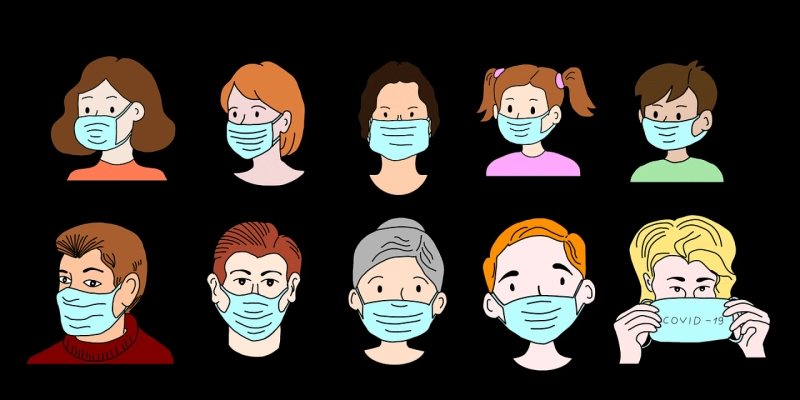Many cities have gone into prolonged lockdown status with the spread of the Covid-19 pandemic around the world, and with it came the closure of office buildings and work sites as well, in order to protect people from this deadly virus. With the lockdowns lifted and life slowly returning to normal (if we can actually call it that), authorities in countries around the world have issued a warning to all building owners to be aware of the potential health risks that could happen when buildings are closed up for long periods of time. Buildings can become reservoirs for infectious diseases like tuberculosis, as well as respiratory hazards such as mould and fungi after being closed up for such long periods of time. It is important for employers to get WHS consultations before opening up the workplace so that they can get the right advise on what procedures to follow regarding clean up etc. In addition, they may also need to conduct regular lung function testing on their employees to ensure that no one is suffering from any workplace related respiratory disease.
What are the risks of hidden respiratory diseases lurking in buildings following long-term lockdown?
Many respiratory diseases could be lurking in buildings that have been subject to long term closures. These diseases include:
Fungal infections of the lungs.Chronic obstructive pulmonary disease (COPD) is caused by exposure to dust, chemicals or cigarette smoke.
These risks are high when buildings have not been opened regularly and built-up moulds could be present in ventilation systems. These diseases can cause serious illness if left untreated, so it is important that property owners act quickly to prevent them from spreading throughout their building populations. Building managers should ensure that they conduct regular cleaning checks on all equipment used within a facility like heating vents and fans. If there is any evidence of mould built upon any part of the ventilation system then this needs to be immediately addressed with appropriate protocols put in place for safety management purposes.
In such cases, it is essential to remove all potential mould and residue in a thorough and professional manner. This is to remove any risk of cross-contamination between the facility’s ventilation system and that of other buildings nearby, as well as prevent respiratory diseases from taking hold amongst building occupants.
How do you know if you have a respiratory disease?
Respiratory diseases can be sneaky. They often start with a simple cold or the flu, and before you know it, you are fighting for your life. That is why it is important to be able to recognise the early signs and symptoms of respiratory diseases, so that you can get the help you need before it is too late.
Some common symptoms of respiratory diseases include:
Sore throat.Chest pain.Difficulty breathing.
If you are experiencing any of these symptoms, please see a doctor as soon as possible. Early diagnosis is key to effective treatment.
It is also essential that employers get lung function testing done on staff following the return to work after long-term closure. This is because it is important to make sure that the building has been properly ventilated and cleaned after being closed for so long, in order to prevent any respiratory diseases from spreading through the workforce.
Throwing open your office windows when you return isn’t enough; if there are any hidden dangers lurking within your walls or floors, they will be released into the air very quickly during this process.
What should I do if I think I might have a respiratory disease?
If you feel that you are showing symptoms of any respiratory disorder, it is important to seek medical attention as soon as possible. Many respiratory diseases can be treated with antibiotics if caught early enough, but left untreated they can lead to much more serious health problems. Early diagnosis and treatment are essential for preventing the spread of these illnesses.
Prevention tips for reducing your risk of getting sick with a respiratory disease due to prolonged exposure to indoor air pollutants
Preventing people from getting these diseases is important, especially after you have just opened up your office building following many months of closure. Some prevention tips that should be followed include:
Opening up the building for short periods of time, and allowing people to come in and out throughout that period.Opening doors or windows to allow fresh air inside the building is also a good idea.Keeping workstations clean and sanitizing them regularly will help prevent employees from getting sick with respiratory illnesses.Getting a professional company to clean out ventilation and sewage systems will help to prevent any bacteria or viruses from lingering in the building's infrastructure.Keeping bathrooms clean and well lit, as well as keeping break rooms stocked with things like water fountains and hand sanitizers can really go a long way towards preventing respiratory diseases among employees.Providing masks and other protective gear to employees who are in the building is also a great idea.Getting a professional service to check and clean out any mould in the building.Keeping a good stock of medical supplies in case an outbreak occurs is important too.Carrying out regular lung function tests in order to make sure that no one is suffering from any such disease.
With the help of a few simple tips, you can protect your employees from respiratory diseases caused by buildings after long term lockdown or closure. Make sure to follow these steps and avoid the costly repercussions that come with neglected building ventilation systems.
0


